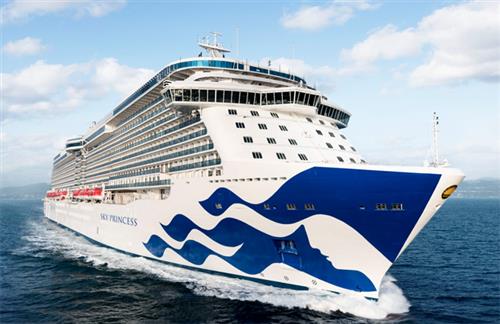Seasickness is a major concern for first-time cruise passengers. Many passengers are reluctant to book a cruise due to the fear of feeling ill. However, there are many ways to combat seasickness.
Dave Mills, Chief Commercial Officer at Iglu Cruise explains everything there is to know, and also how to prevent it.
What exactly is seasickness?
Seasickness is a type of motion sickness which can make you feel dizzy and sick due to the movements of a boat or ship. It is caused by repeated movements when travelling.
It occurs when your brain can’t make sense of information sent from your eyes, ears and body. The inner ear sends different signals to your brain from those your eyes are seeing. These confusing messages cause you to feel unwell.
What are the symptoms of seasickness?
- Dizziness
- Sleepiness
- Headaches
- Nausea and vomiting
- Excessive sweating or cold sweats
- Loss of appetite
How can you alleviate seasickness on a cruise ship? Iglu Cruise’s Dave Mills has some suggestions:
1. Get some seasickness tablets or patches from a pharmacy
Whilst chewable, non-drowsy tablets are often a popular option (especially for kids), there is a variety of over-the-counter options available for preventing and treating sickness.
Travel sickness patches are another available option, which can be prescribed by a GP. These can be applied behind the ear and slowly release medication into your body to correct some of the chemical imbalances caused by motion sickness.
You’ll also find versions which offer relief for up to 24 hours and are very affordable. For further advice on which is the best option for you, speak to your GP or pharmacist.

2. Choose a shorter cruise
If you’re worried about feeling seasick, why not try a shorter cruise? Shorter cruises can range from anywhere from one night up to five. A weekend getaway could be the perfect option for you.
You could also try booking a shorter cruise as a tester, to see how you feel before you book a longer-stay trip.
3. Sail on a bigger ship
One of the benefits of sailing on a bigger ship is that you won’t feel the motions as easily. With so many top cruise lines producing bigger ships each year, it’s easy to opt for larger cruise ships which use state-of-the-art technology and stabilisers.
These stabilisers are submersed beneath the ship to prevent the side-to-side rocking that you may experience out at sea, ensuring guests enjoy a smooth, comfortable journey.
4. Pick a cabin in the middle of the ship
Similar to the middle of a seesaw, cabins located in the middle of a cruise ship won’t feel the motions as intensely as those located at the bow or stern.
Choosing a lower deck is also better for those who experience seasickness, as the movements don’t feel as intense.
Speaking to a travel agent before you book is a great way to ensure you can find the right cabin for you. Just mention you would like to feel as little motion on the ship as possible, and trained professionals will be able to offer guidance in picking the best cabin.
5. Choose itineraries with fewer sea days
With so many itineraries to choose from around the world, there’s bound to be a cruise holiday to suit you. If you’re prone to seasickness, opt for an itinerary with fewer days out to sea, and more time spent in port.
While a Transatlantic cruise is certainly an unforgettable experience, you may find the extended time at sea is too much for your seasickness. Instead, go for something like a Mediterranean island hopping cruise where you’ll be in port almost every single day or in calmer waters.
Article Credit to: https://www.iglucruise.com/







